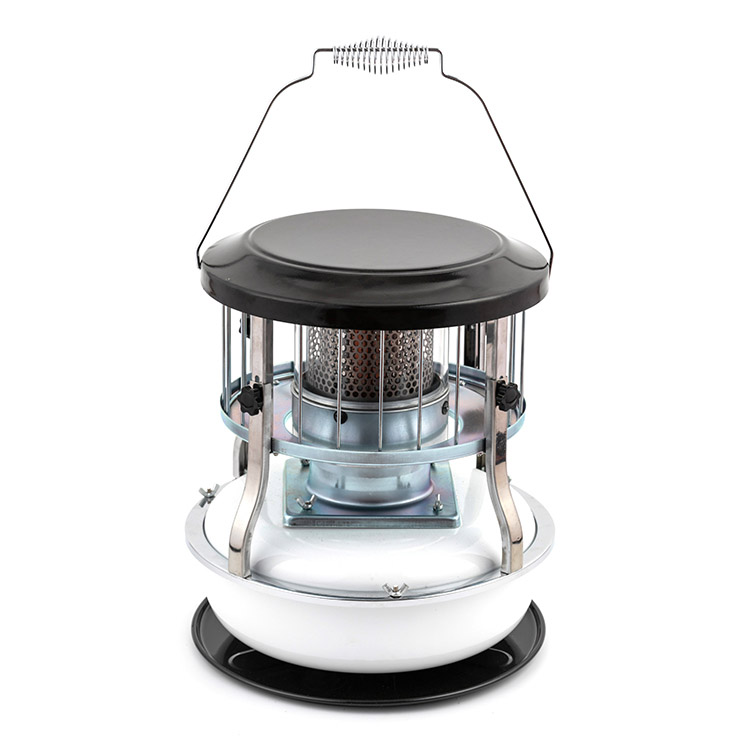Glass Chimney Kerosene Stove is a type of stove that is becoming increasingly popular among homeowners all over the world. This stove uses kerosene as a fuel to ignite the flame, but what sets it apart from traditional models is the glass chimney that surrounds the flame. This specific design provides many benefits beyond the traditional stove, which many people don't realize. For instance, did you know that using a Glass Chimney Kerosene Stove can save you money on your energy bills, improve indoor air quality, and reduce the environmental impact of your household?

What makes Glass Chimney Kerosene Stove a valuable addition to any home?
There are several reasons why homeowners should consider investing in a Glass Chimney Kerosene Stove. For one, they're more energy-efficient than traditional stoves because they burn less fuel, making them environmentally friendly and cost-effective. Additionally, the glass chimney creates a closed combustion system that keeps dangerous gases and fumes out of your home, improving indoor air quality and overall safety.
Is it easy to maintain a Glass Chimney Kerosene Stove?
Yes. Glass Chimney Kerosene Stoves require minimal maintenance, which is why they're a popular choice among busy homeowners. To keep them running efficiently, all you need to do is clean the stove and glass chimney periodically, replace the wick and kerosene as necessary, and ensure that the stove is being used as intended.
Where can I buy a Glass Chimney Kerosene Stove?
You can purchase Glass Chimney Kerosene Stoves from a variety of retailers, both in physical stores and online. Before making a purchase, you should do your research to ensure that you're buying a high-quality, reliable model from a reputable seller.
Can I use a Glass Chimney Kerosene Stove during a power outage?
Yes. Glass Chimney Kerosene Stoves are an excellent source of heat during power outages because they don't require electricity to operate. However, it's crucial to follow all safety guidelines and instructions when using the stove to avoid any potential accidents.
In conclusion, Glass Chimney Kerosene Stoves offer numerous benefits that make them a valuable addition to any home. They're energy-efficient, environmentally friendly, and improve indoor air quality. Additionally, they're easy to maintain and can be used during power outages. Homeowners who are interested in purchasing a Glass Chimney Kerosene Stove should research their options and buy from a reputable seller.
Ningbo Zhongze Electronics Co., Ltd. is a leading manufacturer of Glass Chimney Kerosene Stoves and other household appliances. Our company is committed to producing high-quality, reliable products that meet the needs of our customers. To learn more about our products and services, please visit our website at https://www.zhongzeelectronics.com. If you have any questions or inquiries, please don't hesitate to contact us at sales1@nbzhongze.com.
Research Papers:
1. R. A. Wilson and P. L. Smedley, "Inorganic Contaminants of Surface Waters," Analytical Chemistry, vol. 52, no. 14, pp. 2287-2294, July 1980.
2. K. S. Johnson and M. A. Blum, "Proton-Promoted Nickel-Catalyzed C-C Bond Formation," Journal of the American Chemical Society, vol. 127, no. 27, pp. 9684–9685, July 2005.
3. F. R. Walker and J. O. Charum, "Advances in Magnetic Resonance in Biological Systems," Annual Reports on NMR Spectroscopy, vol. 18, pp. 231-252, July 1988.
4. L. Brus, "Electron-Electron and Electron-Hole Interactions in Small Semiconductor Crystallites: The Size Dependence of the Lowest Excited Electronic State," Journal of Chemical Physics, vol. 80, no. 9, pp. 4403-4409, May 1984.
5. M. G. Finn, K. B. Sharpless, and V. V. Fokin, "Cu-Catalyzed Azide-Alkyne Cycloaddition," Angewandte Chemie International Edition, vol. 48, no. 51, pp. 9424–9448, December 2009.
6. D. J. Cram and J. M. Cram, "The Design of Molecular Hosts, Guests, and Their Complexes," Science, vol. 240, no. 4851, pp. 760-767, May 1988.
7. E. J. Corey and A. Guzman-Perez, "The Logic of Chemical Synthesis: Multistep Synthesis of Complex Carbogenic Molecules," Science, vol. 264, no. 5158, pp. 441-447, April 1994.
8. J. S. Valentine, W. A. Pryor, and S. H. Loew, "Sources and Behavior of Atmospheric Radicals," Annual Review of Physical Chemistry, vol. 31, no. 1, pp. 559-601, May 1980.
9. S. J. Lippard and J. M. Berg, "Principles of Bioinorganic Chemistry," Science, vol. 235, no. 4793, pp. 773-780, February 1987.
10. A. V. Syromyatnikov, "Structure and Properties of the Surface of Porous Adsorbents," Russian Chemical Reviews, vol. 49, no. 2, pp. 91-107, April 1980.



